
Eight of Hong Kong’s best banh mi restaurants, and the secrets to getting the Vietnamese sandwich just right
Vietnamese bakers took the French baguette, adapted it to the humid southeast Asian climate, and filled it with local flavours. For Hong Kong’s burgeoning banh mi brigade, success is all about the quality of the bread
Humidity is the enemy of banh mi thit – the Vietnamese sandwich that has recently become so popular in Hong Kong. It’s a fusion dish that evolved through the French occupation of Vietnam which ended in 1954. The French introduced the baguette to Vietnam, and cooks adapted it to make use of local ingredients.
A banh mi thit (thit being Vietnamese for meat, the traditional filling) is judged on the quality of the banh mi (the bread), which is airy, with a more delicate crust than the French baguette, and which will soften at the first hint of humidity. In Vietnam, banh mi thit is served by street vendors or in small shops. They get around the humidity problem by receiving frequent deliveries of the bread from bakeries, and/or heating it before filling it with anything from pork meatballs or grilled chicken, to fried egg with pork floss.
Many street vendors offer what is also the most popular version outside Vietnam: pork-based cold cuts and pâté, along with pickled carrot and daikon, fresh cucumber, chillies and fresh coriander.
Australian chef Bao La oversees the quality of banh mi sandwiches at the newly opened Le Petit Saigon in Wan Chai, a small sister restaurant to Le Garcon Saigon next door. He credits the sandwich’s distinctive Vietnamese flavour to the fillings – the thinly sliced cold cuts and the pickled and fresh vegetables and herbs.
“The bakers had to adapt, because it’s a lot more humid in Vietnam than it is in France,” he explains. “It’s not exactly the French baguette, but it’s a similar type of concept.” Bao sources the bread from a friend, and says it took three to four months to perfect the airy and crusty texture.
“In Dalat, where my mother is from, the banh mi is still baked in wood ovens – the traditional way. [Here] we bake in stone ovens, so the crust of the bread comes out differently. Here, it is a little heavier.”

He agrees that the crustiness of the bread is essential to a good banh mi thit. “By the end of the meal, you should have crumbs all over your front,” he says.
To combat Hong Kong humidity, which will soften any bread crust, Bao and his team bake the bread 30 minutes before opening, and toast it to order, which gives the crucial crispness. “People often have to wait when it gets busy, but that’s how it is in Saigon,” he explains. “People queue up for their banh mi and that’s the whole joy of it – the theatrics and seeing it being made in front of you.”

“A lot of people put dough improvers to make the bread expand and rise really fast to get the light and airy texture, but some of it is artificial,” he says, adding that the desire to keep his bread natural and organic comes at the price of losing out a little on the airiness. He also stresses the importance of finding a balance between making the bread too soft or too hard.
Ching sells around 150 rounds of banh mi a day, and is proud of the high turnover and Banh Mi Kitchen’s competitive pricing. He says the rise in popularity of banh mi thit in Hong Kong has been slow, as it has long been hugely trendy in his hometown of Melbourne, Australia.
“There are a lot of Hong Kong tourists going to Vietnam on holiday now, they have tasted the food and have an idea of what it should taste like,” he says. “This helps in raising the standards of Vietnamese restaurants in Hong Kong.”
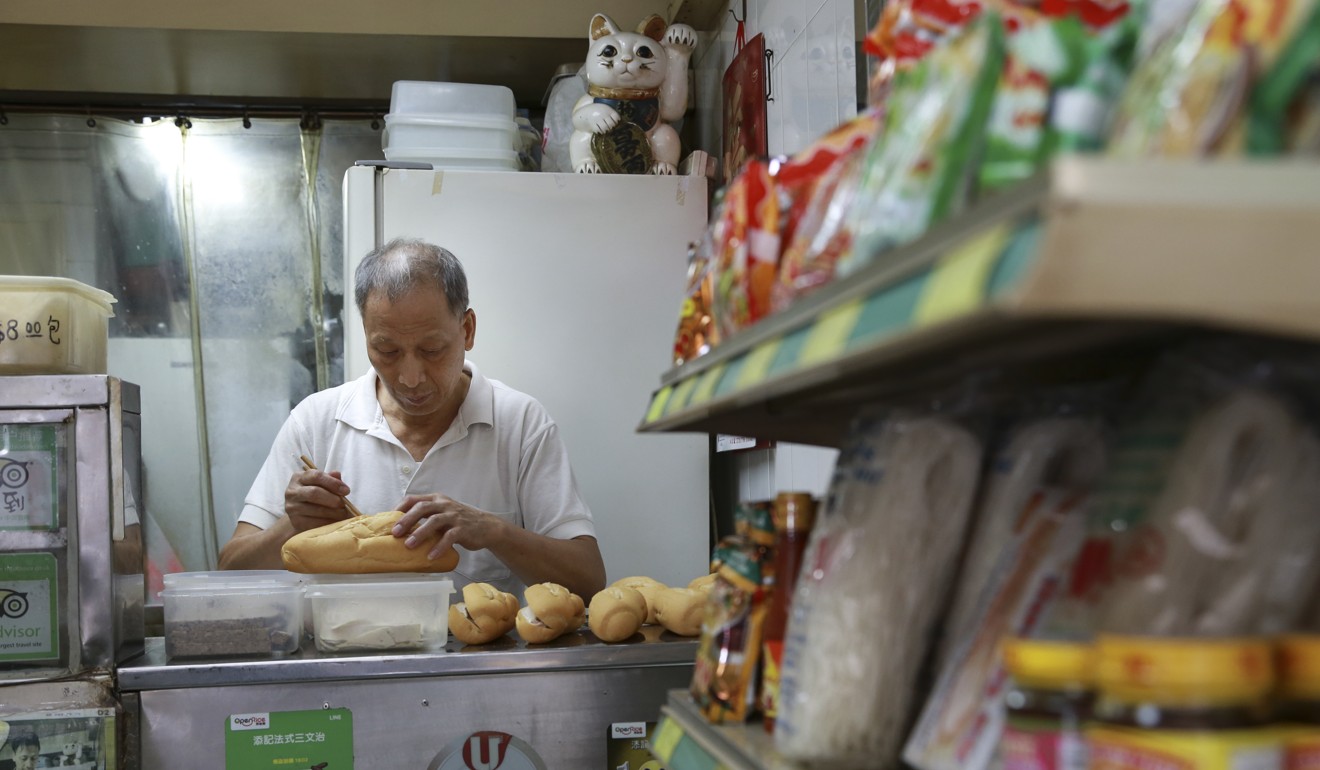
“Currently, there are a lot of baguette-looking loaves on the market, and a lot of variety regarding meat and other fillings, such as shredded curried chicken. We will continue to use authentic fillings in our sandwiches,” says Fan. “It is difficult to get a balanced flavour and texture out of the four kinds of meat, along with the sweet-sour pickled vegetables. The amount of filling you put in is crucial.”
Along with everyone else we spoke to, he points out that good bread is essential, but adds something surprising. “The bread, when it hasn’t been toasted, must be very soft,” he explains. “If the bread is hard before it is toasted, it will break and burst open even before we can fill it, and won’t be able to hold any of the fillings. We won’t be able to work with it at all.”
He works with a local partner that has been baking the bread to his and the previous owners’ specifications. The small takeaway shop sells up to 150 sandwiches a day.
WHERE TO GO FOR BANH MI THIT IN HONG KONG (see map below)
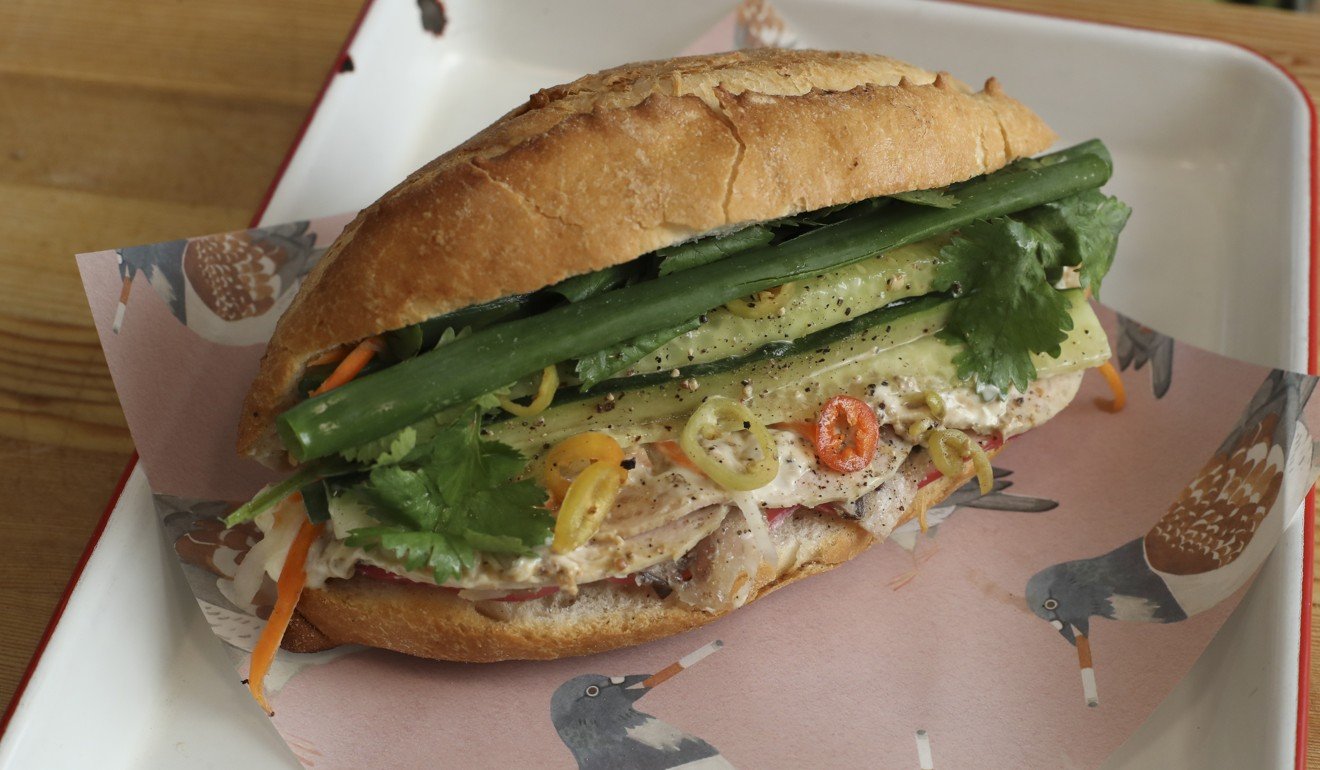
16 Wing Fung St, Wan Chai, tel: 2455 2499
HK$88 for the classic banh mi thit
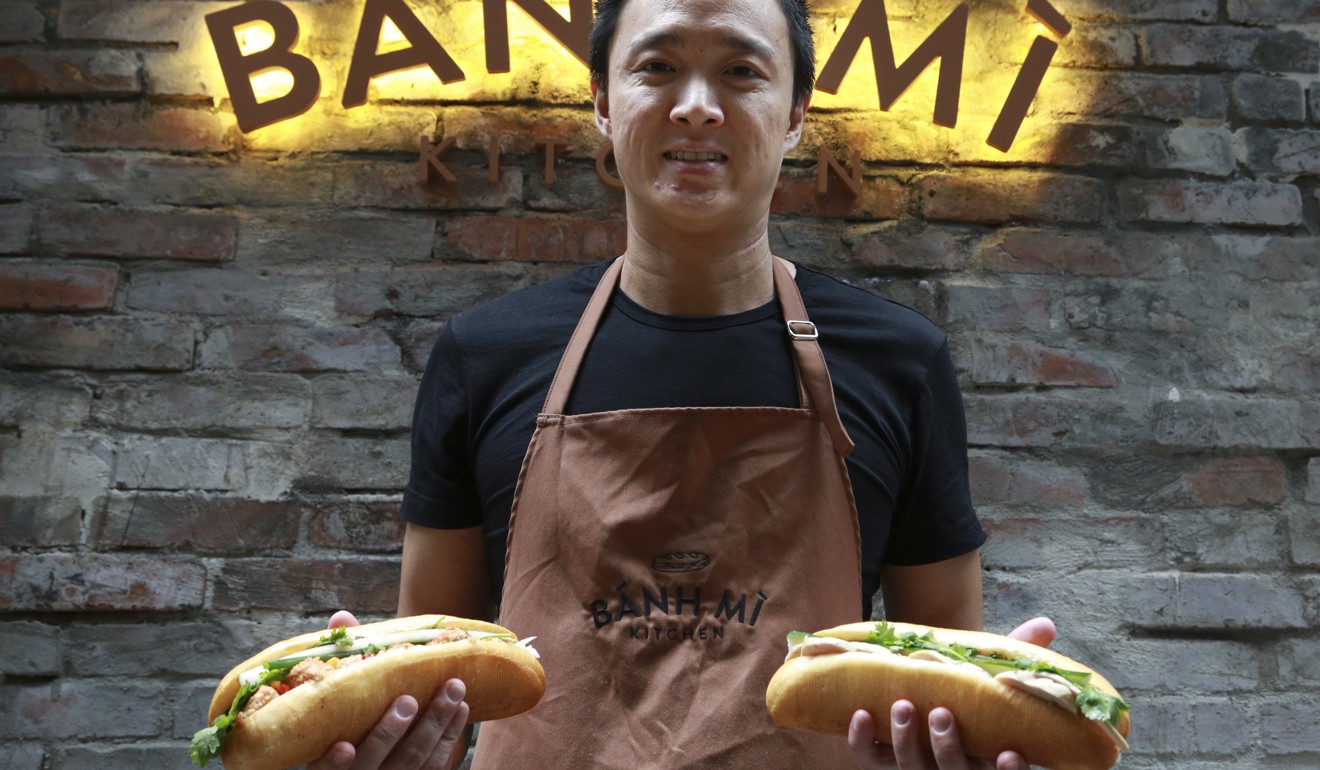
Banh Mi Kitchen
22 Li Yuen St West, Central, tel: 2328 9699
HK$44-HK$52 for a variety of fillings, such as the classic, charred char siu, meatballs, lemongrass chicken, and vegetarian
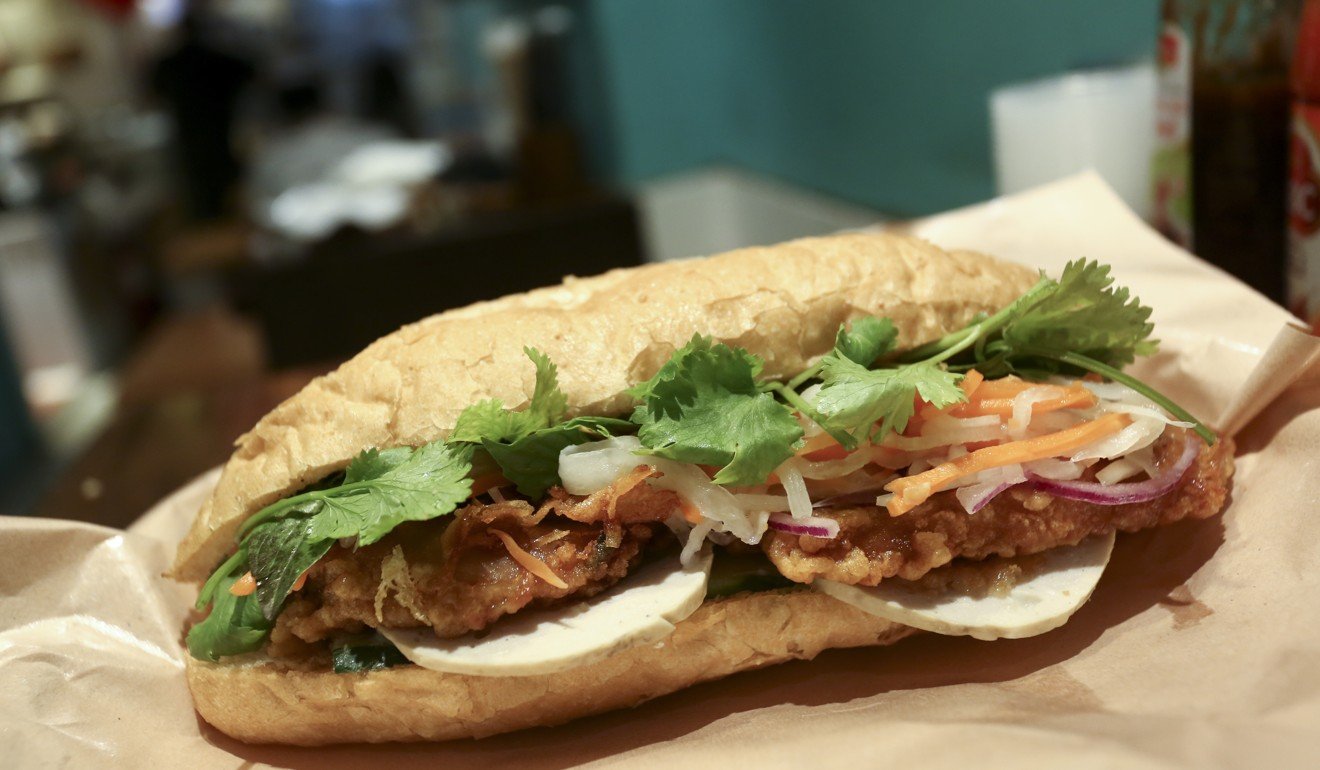
Com Banh Mi
28 Tai Wong St East, Wan Chai, tel: 2528 9131
HK$60 for lemongrass pork chop banh mi thit
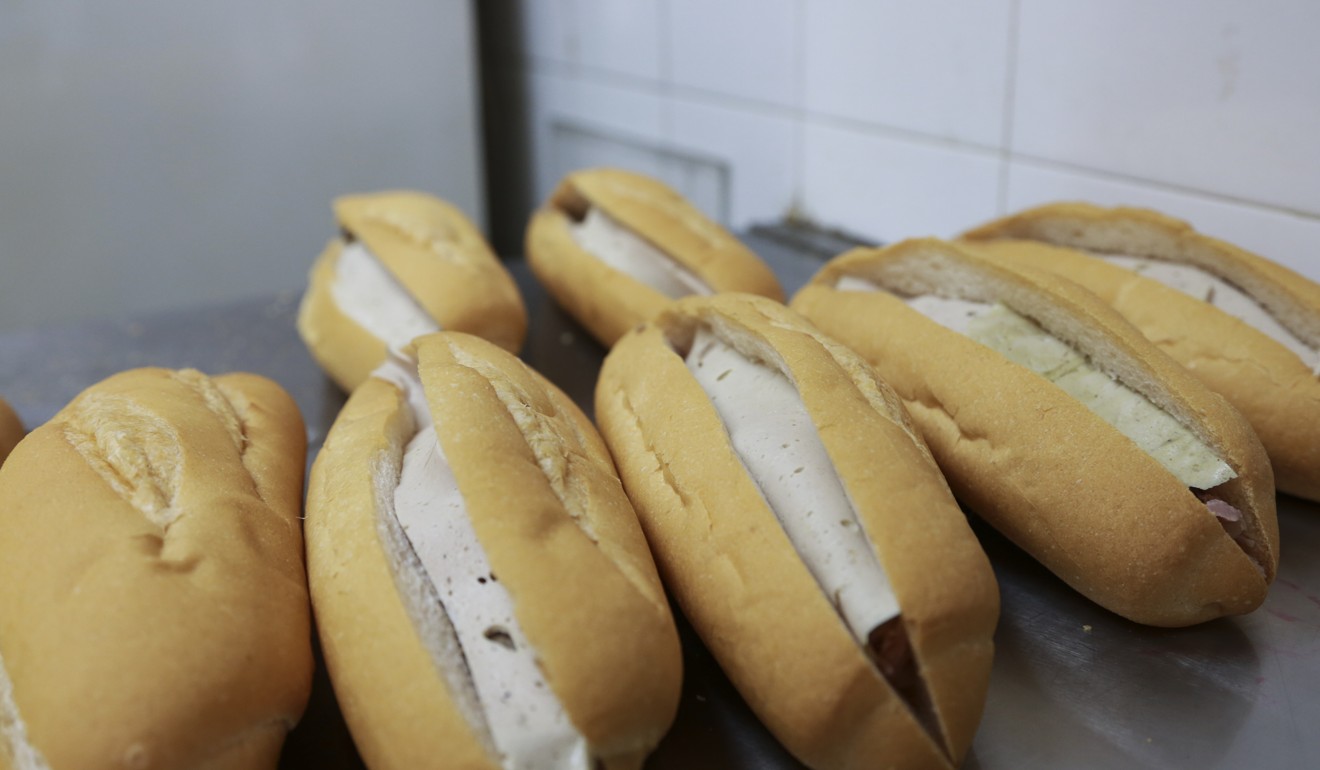
Tim Kee French Sandwiches
Man Yiu Building, 30 Man Yuen St, Jordan, tel: 2385 7939
Price: HK$72 (large classic), HK$37 (small classic)
OTHER PLACES SELLING BANH MI THIT
Co Thanh
2-4 Kau U Fong, Central (no phone)
49 Lung Kong Rd, Kowloon City, tel: 2360 2883
88-90 Wellington St, Central, tel: 2581 9992
and LG/F 9-11 Staunton St, SoHo, tel: 2522 7533
Sai Gon Red Banh My
1 Kwong Wah St, Mong Kok, tel: 5614 6388
